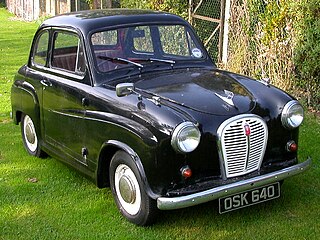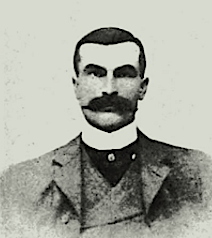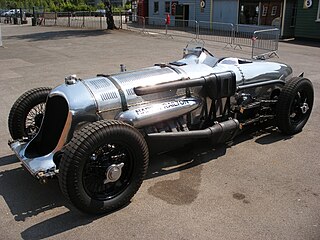1909 Trophy-winning performance
This section may require cleanup to meet Wikipedia's quality standards. The specific problem is: structure and citations.(December 2017) |
Source [16]
Immediately following the introduction of the sleeve-valve principle into the Daimler engine, the Daimler Company in 1909 asked the Royal Automobile Club to frame conditions of a test that should be of unprecedented severity and would demonstrate in the most public manner possible that the new Daimler engine was in every way reliable.
The two engines selected for this test were a 38 and a 22-h.p., having a bore and stroke, respectively, of 124 by 130 mm. and 96 by 130 mm. They were bolted down to the test bench close together in one of the large engine testing shops at the Daimler Works. The section of the shop in which they were placed was railed off and under the sole charge and observation of the R.A.C. officials from the start of the test to the finish. The observers kept watch day and night just as on board a ship, and periodically tested the revolution counters and spring balances to ensure that the engines were always running under full load. Every possible precaution was taken to keep constant and close observation upon the test, and there were never less than two observers on duty.
Both engines were started up at 6 a.m. on Monday, March 22, 1909, and each completed the 132 hours' bench test on the following Saturday evening. To appreciate more clearly the severity of the test, if the larger engine had been driving a car during the whole time, with the standard Daimler gear ratios, a distance of no less than 8,252 miles (13280 km) would have been covered, at a mean speed of 43.45 m.p.h. (69.92 km/h) while the smaller engine would have covered, similarly, a distance of 8,830 miles (14210 km) at 48.4 m.p.h. (77.9 km/h). The disparity in speed and distance between these results is, of course, attributable to the higher rate of revolutions of the smaller engine.
Details of the 38-H.P. Engine Test
First Bench Test
The speed of the engine was 1200 r.p.m. giving a limit of 50.0 h.p. below which the h.p. was at no time to fall.
The duration of the test was 5 days 14 hours 15 minutes or 134.25 hours.
There were no stops incurring any penalties.
There were five stops totalling 1 hour and 56 minutes which did not incur any penalty under Rule 6 (2)
The load was eased for a total of 19 minutes for brake adjustments, but the engine was not stopped. Average horse-power recorded, 54.3.
Petrol consumed, 614 gallons equal to .679 pints per horse-power hour.
Running Test
On completion of the first test, the engine was removed from the bench and fitted under observation to the chassis without any vital parts being disturbed. A standard type four-seater body was fitted and the car proceeded from Coventry to Weybridge - 112 miles (180.2 km). The average weight of the car and passengers on the road was 4,085 lbs = 1 ton 16 cwt 1 qr 25 lbs (1852.9 kg).
The runs on Brooklands track amounted to 1,930.5 miles (3106.8 km)at an average speed of 42.4 mph (68.2 km/h) with an average weight of car and passengers of 3,805 lb (1726 kg). A distance of 5 miles was traversed in running to and from the car-headquarters and the track, and this with the return journey to Coventry made a total mileage of 2,159.5 (3474.5 km).
The petrol consumption on the track was equal to 20.57 m.p.g. and on the road 19.48 m.p.g. The ton-miles per gallon of fuel were 34.94 on the track and 35.97 on the road.
Final Bench Test
On arrival in Coventry, the engine was replaced on the test bench and run for 5 hours 15 minutes during which there were no stoppages of any description; the load was eased for 15 minutes for brake adjustments.
Average horse-power recorded, 57.25.
Petrol consumed, 22.5 gallons = .599 pints per horse-power hour.
The judges append the following remarks to their certificate: "The engine was completely dismantled, and no perceptible wear was noticeable on any of the fitted surfaces. The cylinders and pistons were found to be notably clean. The only perceptible wear in any part was caused by two joint pins rubbing against adjacent parts. The ports of the valves showed no burning or wear."
Details of the 22-H.P. Engine Test
First Bench Test
The speed of the engine was 1,400 r.p.m. giving a limit of 35.3 h.p. below which the h.p. was at no time to fall.
The duration of the test was 5 days 12 hours 58 minutes or 132 hours 58 minutes. There were no stops incurring any penalty.
There were two stops of 17 minutes total duration, which did not incur any penalty under Rule 6 (2) The load was eased for a total of 41 minutes for brake adjustments, but the engine was not stopped. Average horse-power recorded was 38.83.
Petrol consumed, 476.5 gallons equal to .739 pints per h.p. hour.
Running Test
The conditions for the running test were the same as for the 38-h.p. car test, but with varying figures as to the results.
Average weight of the car and passengers on the road was 3,512.5 lbs (1638.6 kg); on the track, 3,332.5 lb (1511.6 kg).
Distance covered on Brooklands track, 1,914.1 miles (3080.4 km).
Average speed, 41.88 mph (67.4 km/h).
The petrol consumption on the track was equal to 22.44 m.p.g. and on the road 19.48 m.p.g. The ton-miles per gallon of fuel were 33.37 on the track and 31.19 on the road.
The total mileage of 2,143.1 (3449 km).
Final Bench Test
Duration, 5 hours 2 minutes. No stoppages of any description; the load was eased for 1 minute. Average horse-power recorded, 38.96. Petrol consumed, 18.25 gallons = .749 pints per h.p. hour. The judges append the following remarks to their certificate: "The engine was completely dismantled, and no perceptible wear was noticeable on any of the fitted surfaces. The cylinders and pistons were found to be notably clean. The ports of the valves showed no burning or wear."

















